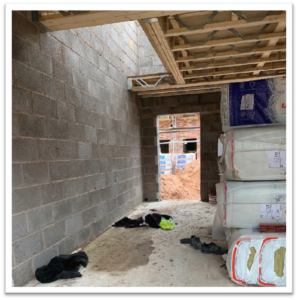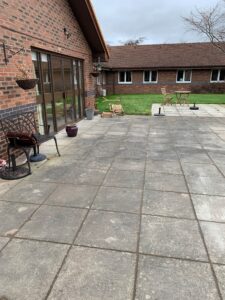BSR launches campaign for residents of high-rise buildings
- High-rise building residents have more rights and protections than ever before.
- Residents can now check if their high-rise building is registered
- The Building Safety Regulator is there to drive forward safety standards across the built environment. The Building Safety Act 2022 is at the centre of building safety reforms in England.
The new regulator is asking all those living in tall buildings in England to be aware of how new Building Safety laws affect them. These laws protect and empower people living in high-rise residential buildings (HRBs) to take part in safety decisions that affect them – as well as providing a clear process for reporting safety concerns. This is a major milestone in the journey towards safer high-rise living, placing residents’ rights front and centre.
The Building Safety Act provides a framework for ensuring the safety of residents living in HRBs – these are buildings 18 meters or seven or more floors in height containing at least two residential units. They are defined as ‘higher-risk’ under the Act. Residents of these buildings are urged to find out more about how the new law affects them.
Every high-rise building is now required to have a Principal Accountable Person (PAP), ensuring that those responsible for managing the building’s safety can be held to account for fulfilling their legal obligations.
The enhanced residents’ rights include:
- Assurance that safety risks in their building are being effectively addressed
- Access to ongoing information on what is being done to improve safety in their building
- Empowerment to voice safety concerns, with assurance that their concern will be taken seriously
- Clear, accessible, and easy to understand information regarding safety matters
The legislation empowers residents to report safety concerns, assured that their grievances will be taken seriously. Clear protocols are in place for expressing concerns or making a complaint. Residents can raise concerns and issues to the PAP for their building.
Operating within the Health and Safety Executive, the BSR is a crucial part of the Government’s response to the Grenfell fire tragedy. An essential element of the new regulator’s role is to ensure the safety of high-rise residential buildings.
Philip White, Director of Building Safety at the Health and Safety Executive, said: “Residents are at the heart of our regulatory efforts. It’s vital for us to amplify their voices and to recognise the role they play in the safety of their buildings. Safety standards in high rise buildings must be assessed and managed by the Principal Accountable Person (PAP). The regulator will review how the building is managed and whether the PAP has complied with their duties.
“Our residents panel members represent the diverse resident community in high-rise buildings. They provide valuable insights based on their real-life experiences of living in a high-rise building. This engagement contributes significantly to our regulatory programme for HRBs.
The residents’ panel welcomes the new measures empowering high-rise residents. They are encouraged by the assurance that residents can speak up with confidence, knowing that their voices will not only be heard but also that their concerns will be considered fully.”
Marlene Price BEM, a member of the BSR Residents Panel, says: “Everyone should feel safe in their home, including the millions of people who live in high-rise buildings. The Building Safety Regulator is working to make this ambition a reality.”
Visit the Building Safety Regulator campaign website to learn more about BSR’s work to make buildings in England safer.
Notes to Editors:
- About BSR: The Building Safety Regulator (BSR) is an independent body established by the Building Safety Act, 2022, and is part of the Health and Safety Executive (HSE). BSR will raise building safety and performance standards and oversee a new stringent regime for high-rise residential buildings, as well as overseeing the wider system for regulating safety and performance of all buildings and increasing the competence of relevant regulators and industry professionals.
- About HSE: The Health and Safety Executive (HSE) is Britain’s national regulator for workplace health and safety. We prevent work-related death, injury and ill health through regulatory actions that range from influencing behaviours across whole industry sectors through to targeted interventions on individual businesses. These activities are supported by globally recognised scientific expertise.
- About the Building Safety Act, 2022: The Building Safety Act gained Royal Assent on the 28 April 2022 and makes ground-breaking reforms to give residents and homeowners more rights, powers, and protections. The Act overhauls existing regulations, creating lasting change and makes clear how residential buildings should be constructed, maintained, and made safe.
- For media enquiries, interview requests, or additional information, please email: media.enquiries@hse.gov.uk – interviews will be available on a first come, first served basis.

